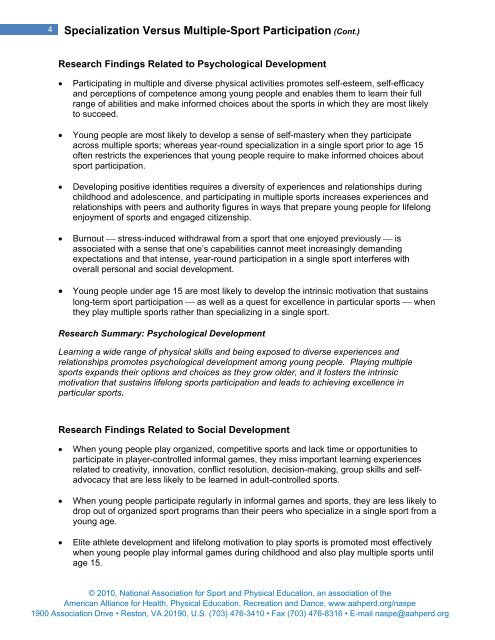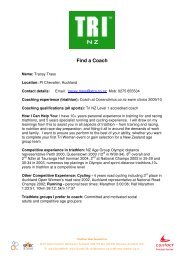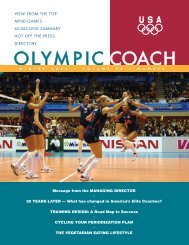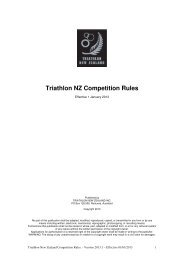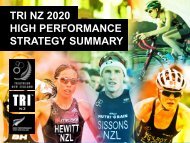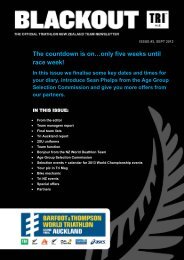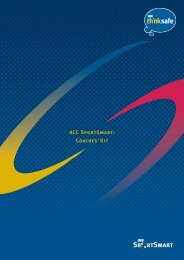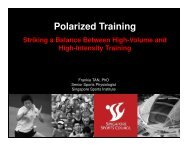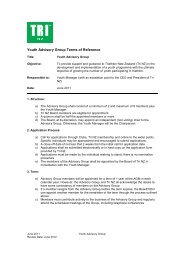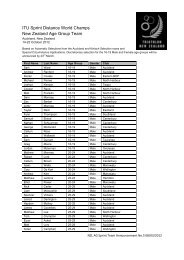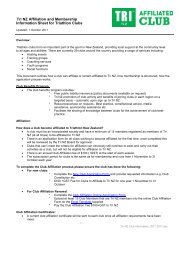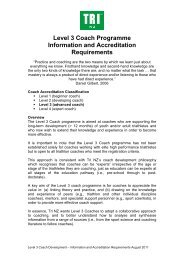Guidelines for Participation in Youth Sport Programs ... - AAHPERD
Guidelines for Participation in Youth Sport Programs ... - AAHPERD
Guidelines for Participation in Youth Sport Programs ... - AAHPERD
You also want an ePaper? Increase the reach of your titles
YUMPU automatically turns print PDFs into web optimized ePapers that Google loves.
4 Specialization Versus Multiple-<strong>Sport</strong> <strong>Participation</strong> (Cont.)Research F<strong>in</strong>d<strong>in</strong>gs Related to Psychological Development• Participat<strong>in</strong>g <strong>in</strong> multiple and diverse physical activities promotes self-esteem, self-efficacyand perceptions of competence among young people and enables them to learn their fullrange of abilities and make <strong>in</strong><strong>for</strong>med choices about the sports <strong>in</strong> which they are most likelyto succeed.• Young people are most likely to develop a sense of self-mastery when they participateacross multiple sports; whereas year-round specialization <strong>in</strong> a s<strong>in</strong>gle sport prior to age 15often restricts the experiences that young people require to make <strong>in</strong><strong>for</strong>med choices aboutsport participation.• Develop<strong>in</strong>g positive identities requires a diversity of experiences and relationships dur<strong>in</strong>gchildhood and adolescence, and participat<strong>in</strong>g <strong>in</strong> multiple sports <strong>in</strong>creases experiences andrelationships with peers and authority figures <strong>in</strong> ways that prepare young people <strong>for</strong> lifelongenjoyment of sports and engaged citizenship.• Burnout ⎯ stress-<strong>in</strong>duced withdrawal from a sport that one enjoyed previously ⎯ isassociated with a sense that one’s capabilities cannot meet <strong>in</strong>creas<strong>in</strong>gly demand<strong>in</strong>gexpectations and that <strong>in</strong>tense, year-round participation <strong>in</strong> a s<strong>in</strong>gle sport <strong>in</strong>terferes withoverall personal and social development.• Young people under age 15 are most likely to develop the <strong>in</strong>tr<strong>in</strong>sic motivation that susta<strong>in</strong>slong-term sport participation ⎯ as well as a quest <strong>for</strong> excellence <strong>in</strong> particular sports ⎯ whenthey play multiple sports rather than specializ<strong>in</strong>g <strong>in</strong> a s<strong>in</strong>gle sport.Research Summary: Psychological DevelopmentLearn<strong>in</strong>g a wide range of physical skills and be<strong>in</strong>g exposed to diverse experiences andrelationships promotes psychological development among young people. Play<strong>in</strong>g multiplesports expands their options and choices as they grow older, and it fosters the <strong>in</strong>tr<strong>in</strong>sicmotivation that susta<strong>in</strong>s lifelong sports participation and leads to achiev<strong>in</strong>g excellence <strong>in</strong>particular sports.Research F<strong>in</strong>d<strong>in</strong>gs Related to Social Development• When young people play organized, competitive sports and lack time or opportunities toparticipate <strong>in</strong> player-controlled <strong>in</strong><strong>for</strong>mal games, they miss important learn<strong>in</strong>g experiencesrelated to creativity, <strong>in</strong>novation, conflict resolution, decision-mak<strong>in</strong>g, group skills and selfadvocacythat are less likely to be learned <strong>in</strong> adult-controlled sports.• When young people participate regularly <strong>in</strong> <strong>in</strong><strong>for</strong>mal games and sports, they are less likely todrop out of organized sport programs than their peers who specialize <strong>in</strong> a s<strong>in</strong>gle sport from ayoung age.• Elite athlete development and lifelong motivation to play sports is promoted most effectivelywhen young people play <strong>in</strong><strong>for</strong>mal games dur<strong>in</strong>g childhood and also play multiple sports untilage 15.© 2010, National Association <strong>for</strong> <strong>Sport</strong> and Physical Education, an association of theAmerican Alliance <strong>for</strong> Health, Physical Education, Recreation and Dance, www.aahperd.org/naspe1900 Association Drive • Reston, VA 20190, U.S. (703) 476-3410 • Fax (703) 476-8316 • E-mail naspe@aahperd.org


